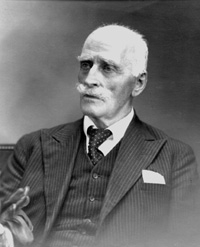I. LUKYANOVA - HAMSUN: AN EXPERIENCE OF NAIVE READING
 I first heard of Hamsun at my 15, from a rather unexpected source – a Chekh book for teenage girls written by Alena Santarova and named “Katya, Katenka, Katrine”. The main character, a teenage girl, was reading the diary of her grandmother, a volunteer hospital nurse during the first world war, and the young nurse was adimiring Hamsun in general, and Leutenant Glan, and the cruel and splendid Edwarda, of course. I first heard of Hamsun at my 15, from a rather unexpected source – a Chekh book for teenage girls written by Alena Santarova and named “Katya, Katenka, Katrine”. The main character, a teenage girl, was reading the diary of her grandmother, a volunteer hospital nurse during the first world war, and the young nurse was adimiring Hamsun in general, and Leutenant Glan, and the cruel and splendid Edwarda, of course.
So I made a conclusion it was a love story worth reading.
I was quite surprised to discover three years later that my favorite satirical poet Sasha Cherny whose works I studied as a student – the bitter and mocking Sasha Cherny - wrote a sad poem full of envy to Lieutenant Glan and expressing a desire to live a simple life in the beautiful Northern nature.
As I continued to read and went deeper into my Silver Age studies it turned out that the mysterious Hamsun really impressed almost each and every one of the prominent Russian writers of that age.
Pan, of course.
It turned out that the novel was not about love at all. What an unpleasant surprise for an 18-year old girl and what a treasure for a literary student. Yes, it was all about philosophical ideas, and escape from civilization, and Nietzsche, and the relationship of man and nature, and anti-intellectualism, and anti-urbanism, and many other isms and philosophies.
Hamsun’s works were published in Russian in 1972, and then only in 1989 – when my generation was old enough to read him and right in time to use his books for the highly intellectual purpose of tracing the links between Nietzsche and Maxim Gorky and Artsybashev, the Russian preacher of simple animal life… and generally – for contemplating on the spiritual quest of the frustrated young generation of the gorgeous, hopeless and decaying Silver Age… and write a good thesis paper, of course.
So the book was bought and read. And, oopse, it was all about love.
Pan, of course. And Victoria.
Forget the spiritual quest - and forget Nietzsche - and just read and cry because love is desperate, and the loving people always torture each other, and they never know why, and repentance comes when it is too late, and maturity which means tolerating and understanding and forgiving is acquired through great and inevitable loss. And, as Pushkin said long ago, the happiness was so close, so possible…
And it never happened.
I dare say, it is this high note of dinging heartache that attracted the Russian readers to Hamsun. Not the sermon of simple life, although it was also very tempting. Not the rich philosophical background. But the high-pitched note of longing and sorrow for the happiness which was so close, so possible… The Chaikovsky note, the Pushkin note, the Russian romance note – the one a Russian reader recognizes immediately and unmistakably.
It’s all about being young and stubborn and stupid and not able to restrain your wild self, it’s about the mistakes we all make at 18 and remember with remorse all our life long. It’s about our youthful attempts to be cool and stone-hearted and assert ourselves through breaking other people’s hearts. It’s the horrible truth that you can be too late; it is a book that you have to read at 18 and cry about and not learn the lesson. And reread it at 30 and say, yes, you were right, Mr Hamsun, but what’s the use of it…
It is probably the young desire to try out the female charm and power over the male heart is what attracted Anna Akhmatova who loved Hamsun in her youth and who was probably his heroine incarnated – and a role model for the exalted and well-read girls of the end of the XX century.
Hamsun has all the answers to the heartbreaking questions we had at 18; the problem is that we were unable to adopt them; it’s the lesson each one has to learn by himself, or, more exactly, herself.
The school teachers of Russian literature noticed long ago that girls and boys have different reading habits. While reading War and Peace, for instance, boys skip all the peace and read the war scenes; the girls skip the war and read the peace, the love, the relationships.
The criticists and theorists of literature, though, display the third pattern of reading – they read the philosophical afterwards that no normal school kid would read.
Hamsun, just like Leo Tolstoy, gives the food for thinking to the boys and to the girls and to the theorists of literature. But as a former student who read Hamsun at her 20 - when it is the best and the most proper time to read him - I want to remind that the literary connections are important and the intertextual links may be obvious and interesting – but it’s the naïve reading that makes literature what it is – what clasps your heart and makes you cry - because a girl thought out by a stranger a hundred years ago is too proud to admit she loves a guy who also never existed.
(с) Irina Lukyanova

I. Lukyanova - Hamsun: an experience of naive reading
|

